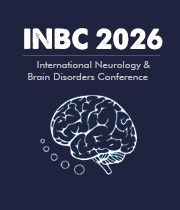Title : Role of glucocorticoids and re-introduction of hyponatremia in the management of osmotic demyelination syndrome
Abstract:
Osmotic Demyelination Syndrome (ODS) is a rare but serious complication that can occur following the rapid correction of chronic hyponatremia. Characterized by demyelination in the central pons and other brain regions, it presents with a wide spectrum of neurological deficits including quadriparesis, dysarthria, dysphagia, and altered consciousness. Currently, there is no definitive treatment for ODS once it develops, and management is largely supportive. Emerging animal studies, however, suggest a potential role for re-lowering serum sodium and administering glucocorticoids to improve outcomes. We report a case of a 65-year-old male with a history of hypertension, polycystic kidney disease, and parkinsonism who presented with altered sensorium and progressive weakness of all four limbs. He had been previously admitted for intractable vomiting and treated with rapid correction of hyponatremia using 3% hypertonic saline. His condition worsened over the next 48 hours, and MRI brain (FLAIR) revealed pontine demyelination, confirming a diagnosis of ODS. In response, serum sodium was carefully reduced from 136 mEq/L to 123 mEq/L over three days using intravenous 5% dextrose and enteral free water. Simultaneously, intravenous hydrocortisone was administered at 100 mg every 8 hours. The patient’s sensorium began improving by the third day of steroid therapy, followed by gradual recovery of speech and limb strength over the next few days. This case supports the therapeutic potential of combining re-introduction of hyponatremia with glucocorticoid therapy in the management of ODS. While slow and controlled sodium correction remains the cornerstone of prevention, these interventions may offer a viable option for mitigating established cases. Our findings are in line with experimental studies demonstrating reduced mortality and demyelination in animal models treated with dexamethasone or with re-induced hyponatremia. Further clinical research is warranted to establish standardized protocols and validate the safety and efficacy of these approaches in humans.




